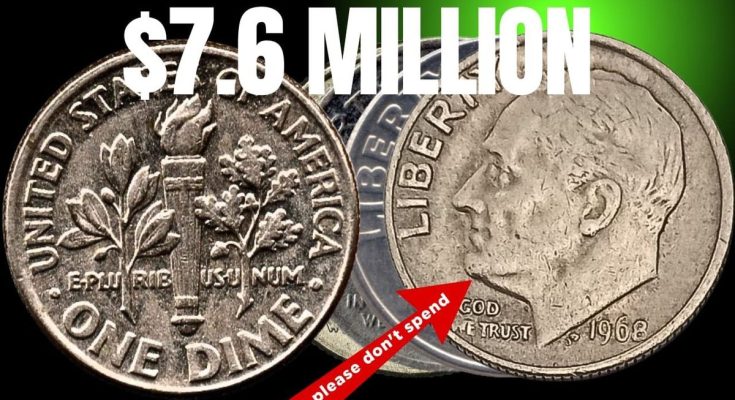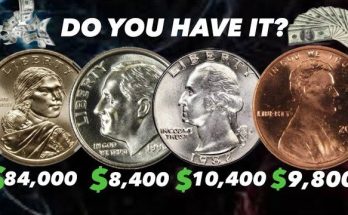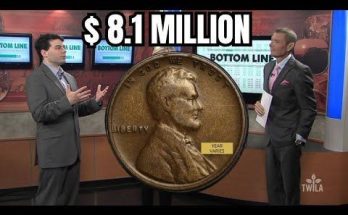The tiny dime in your coin jar may be worth far more than its ten-cent face value, with certain rare specimens minted between 1968 and 2015 fetching hundreds of thousands of dollars at auction. The ultimate prize—a rare mint error—has a record sale price that comes close to the headline’s staggering $760,000 valuation. This astonishing value is typically tied to a specific type of production mistake: the missing mintmark, an error so scarce it has captivated the coin collecting (numismatic) community for decades. This guide explores the most valuable Roosevelt dimes from this era, offering a road map for enthusiasts hoping to “Check Your Change!” and uncover a fortune.
The Holy Grail: The 1975 “No-S” Proof Dime
No error coin from this period generates more excitement than the 1975 “No-S” Proof Roosevelt Dime. This dime is the undisputed monarch of modern error coins, with a value that has surpassed half a million dollars. The reason for its extraordinary worth is its extreme scarcity: only two confirmed examples of this coin are known to exist.
To understand its rarity, one must first understand what a Proof coin is. Proof coins are special issues, often sold in complete sets, that are struck with exceptional care, giving them a mirror-like finish, sharp design elements, and a distinct look compared to coins made for general circulation. Proof dimes are typically minted in San Francisco and must bear the “S” mintmark. The 1975 Proof Dimes were meant to have an “S”. The “No-S” error occurred because the die used to strike these two specific coins was mistakenly shipped from the Philadelphia Mint without the “S” mintmark being punched onto it, a production oversight that was caught quickly, limiting the number of errors released. A PCGS-graded example of the 1975 No-S Proof Roosevelt Dime realized an all-time auction record for the coin when it fetched $506,250. Since the coin was only distributed in Proof Sets, finding one in circulation is highly unlikely but not impossible, making the careful inspection of old Proof Sets a thrilling prospect for collectors.
The Other “No-Mintmark” Errors of High Value
While the 1975 No-S is the most valuable, it is part of a family of “No-Mintmark” errors from the clad-era (1965-present) that includes other highly sought-after dates. These other missing mintmark errors are also incredibly rare and command five-figure prices:
- 1968 “No-S” Proof Dime: This coin, the first of the modern “No-S” dime varieties, is second only to the 1975 No-S in rarity. Only a few dozen examples are known, and a single specimen has sold for nearly $49,000. Even coins in lower grades can be worth around $12,000.
- 1970 “No-S” Proof Dime: Another San Francisco Proof dime that left the mint without its characteristic “S” mintmark. Several hundred are believed to exist, with examples worth around $1,000.
- 1983 “No-S” Proof Dime: The last of the “No-S” Proof varieties, which can be valued over $10,000 in top grades.
- 1982 “No-P” Business Strike Dime: This error is unique because it is a coin made for circulation, not a Proof issue. Dimes from the Philadelphia Mint were supposed to carry the “P” mintmark starting in 1980, but a few thousand were released without it. In high-quality Mint State (MS64) condition, these coins are valued at around $225.
Beyond Missing Mintmarks: Other Collectible Errors
The Roosevelt dime series from 1968 to 2015 features other types of valuable errors that are worth seeking in your change or collection.
- 1995-P Doubled Die Obverse (DDO): This variety shows noticeable doubling on the date and inscriptions on the front (obverse) of the coin.
- 1999-D Broadstruck on a Cent Planchet: A coin struck on a bronze cent blank instead of a clad dime blank, resulting in a reddish-brown color and a wider, un-reeded edge. These errors have commanded prices as high as $6,325.
- 2015-P Rotated Die: This error occurs when the two dies (obverse and reverse) are misaligned.
- “Full Bands” (FB) Designation: For any Roosevelt dime, particularly those in high uncirculated or Proof grades, the “Full Bands” designation significantly increases its value. This distinction is given to dimes where the horizontal bands on the torch (on the reverse) are sharply struck and fully separated.
Your Collector’s Checklist: What to Look For
To find one of these rare treasures, you must know what you are looking for.
- Check the Date and Mintmark Location: Look for the mintmark (P, D, or S) above the date, on the obverse side of the coin near Roosevelt’s neck.
- Missing Mintmarks: The crucial step is identifying the absence of the mintmark. If a dime from 1968, 1970, 1975, or 1983 lacks an “S,” or if a 1982 dime lacks a “P,” you may have an error.
- Proof vs. Circulation Strike: Remember that the ultra-rare “No-S” coins are Proof strikes, meaning they should have mirror-like fields and frosted, detailed designs. A regular-looking 1975 dime with no mintmark is simply a common Philadelphia business strike.
- Error Identification: Inspect the coin for other errors like doubling on the lettering or date (DDO/DDR), or an unusual color and weight (struck on the wrong planchet).
- Certification: Due to the high value and potential for misidentification, any suspected valuable error coin should be authenticated and graded by a professional service like PCGS or NGC.
The thrilling possibility that a single, overlooked dime could be worth tens or even hundreds of thousands of dollars is a powerful incentive to meticulously examine every ten-cent piece that crosses your path. The next record-breaking rare US Dime from the 1968-2015 era might be waiting in your loose change right now—it’s time to check your coin collection!



